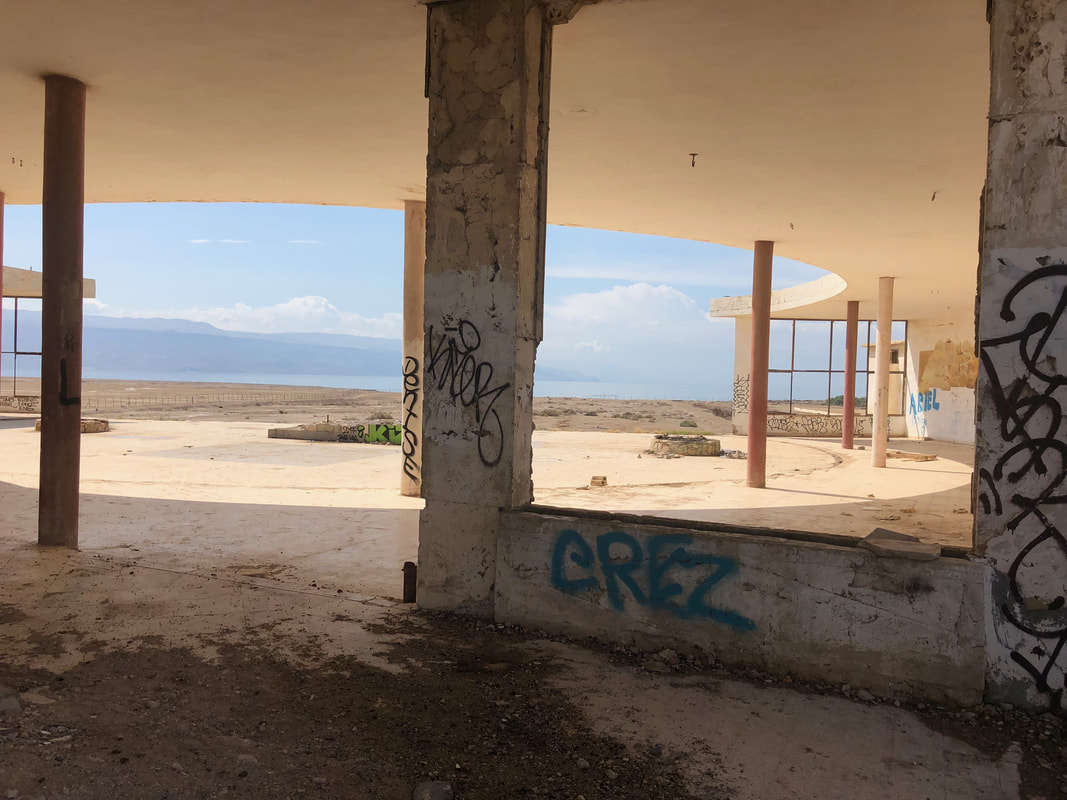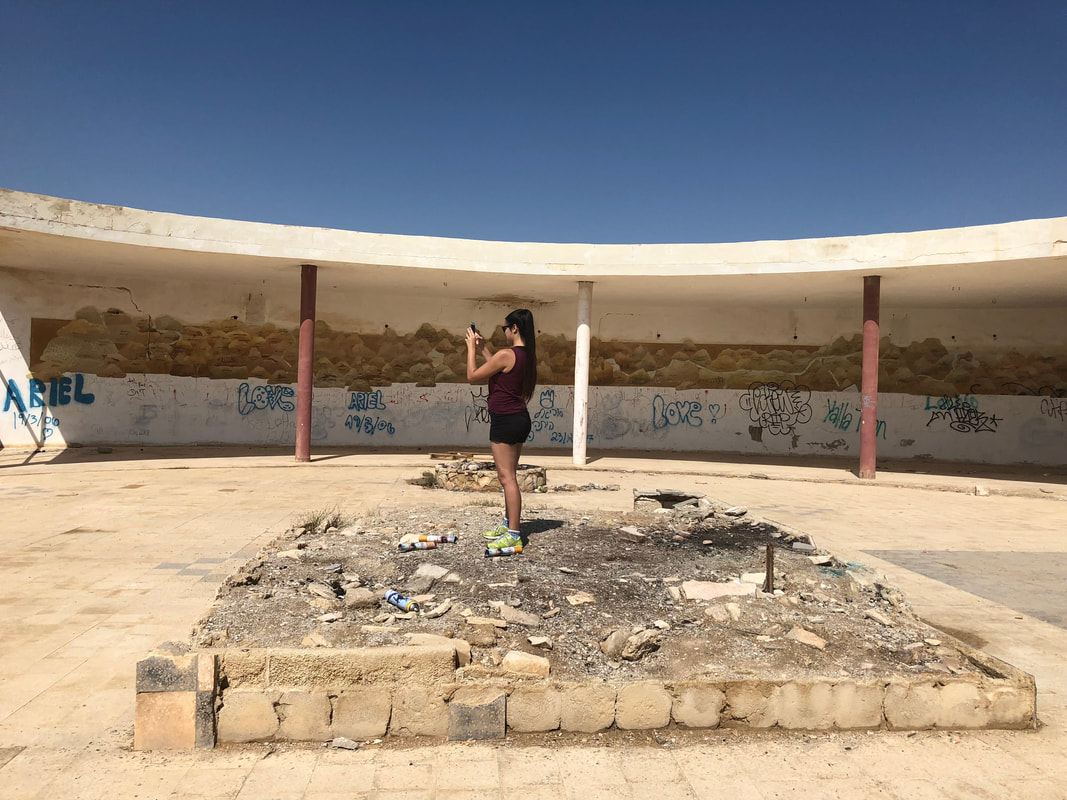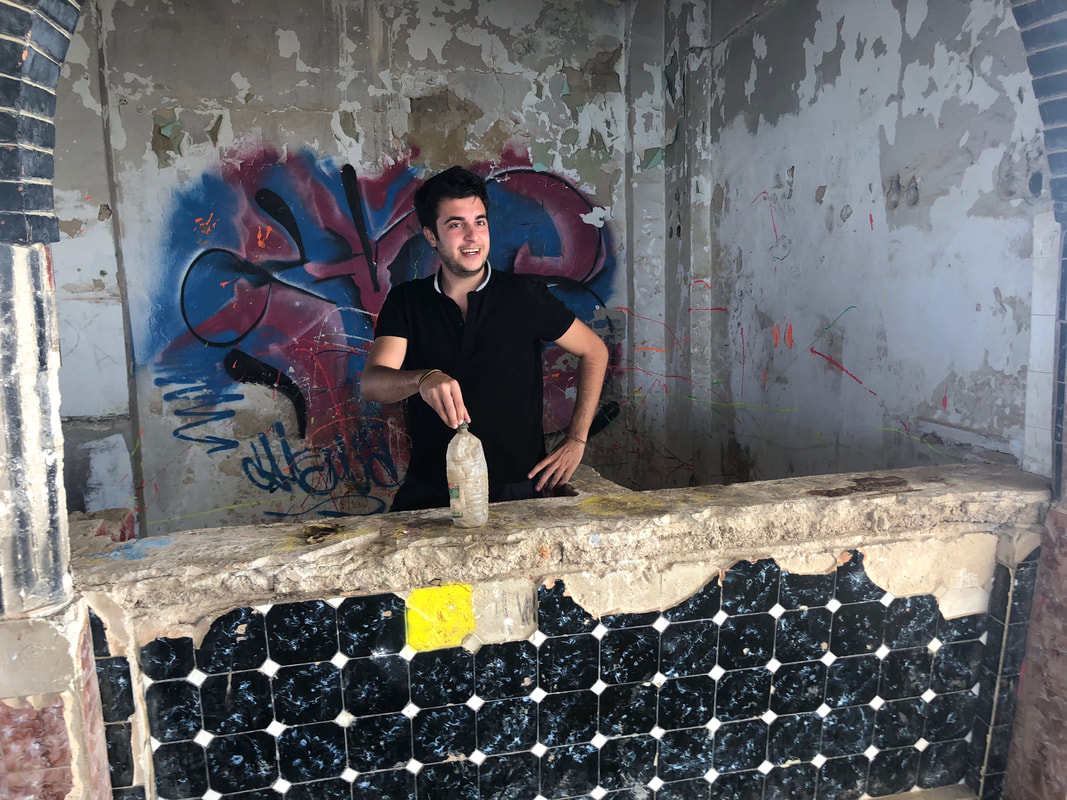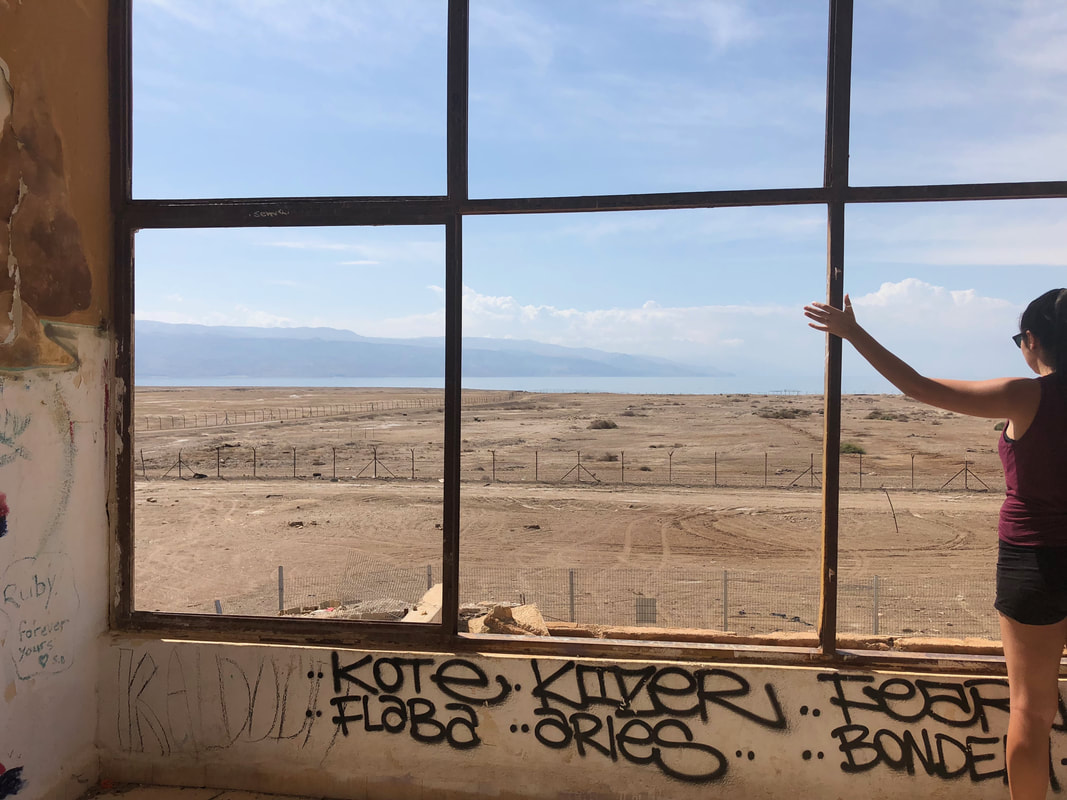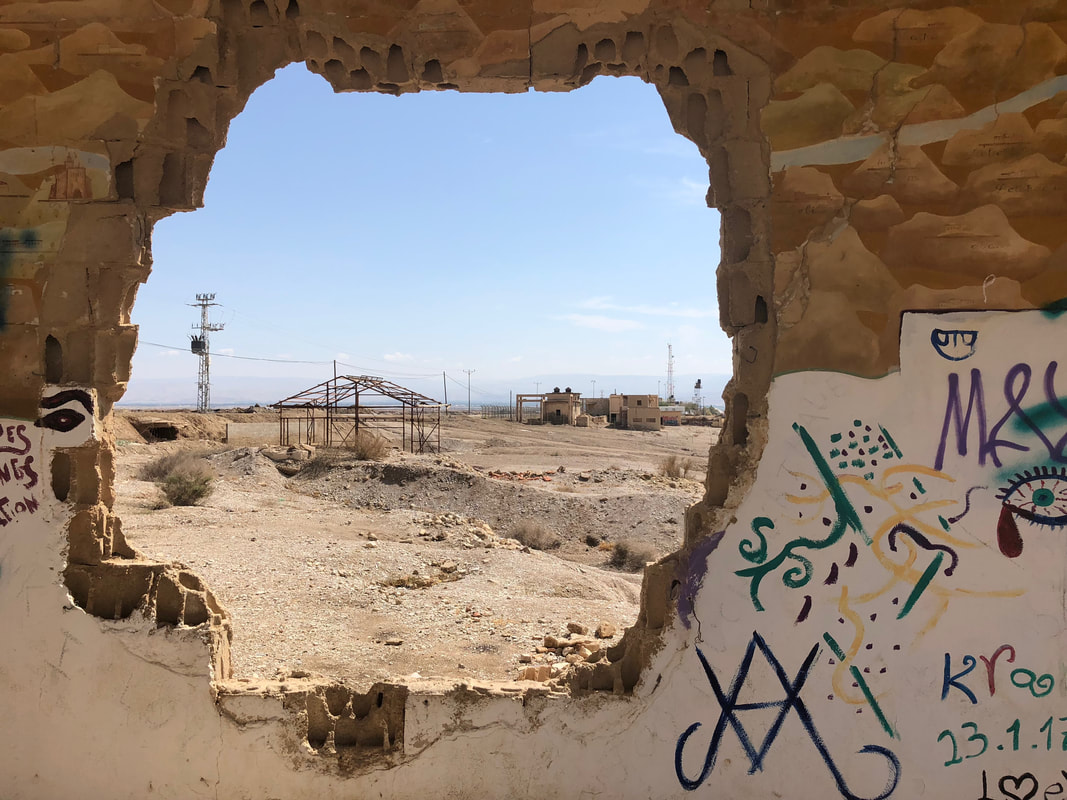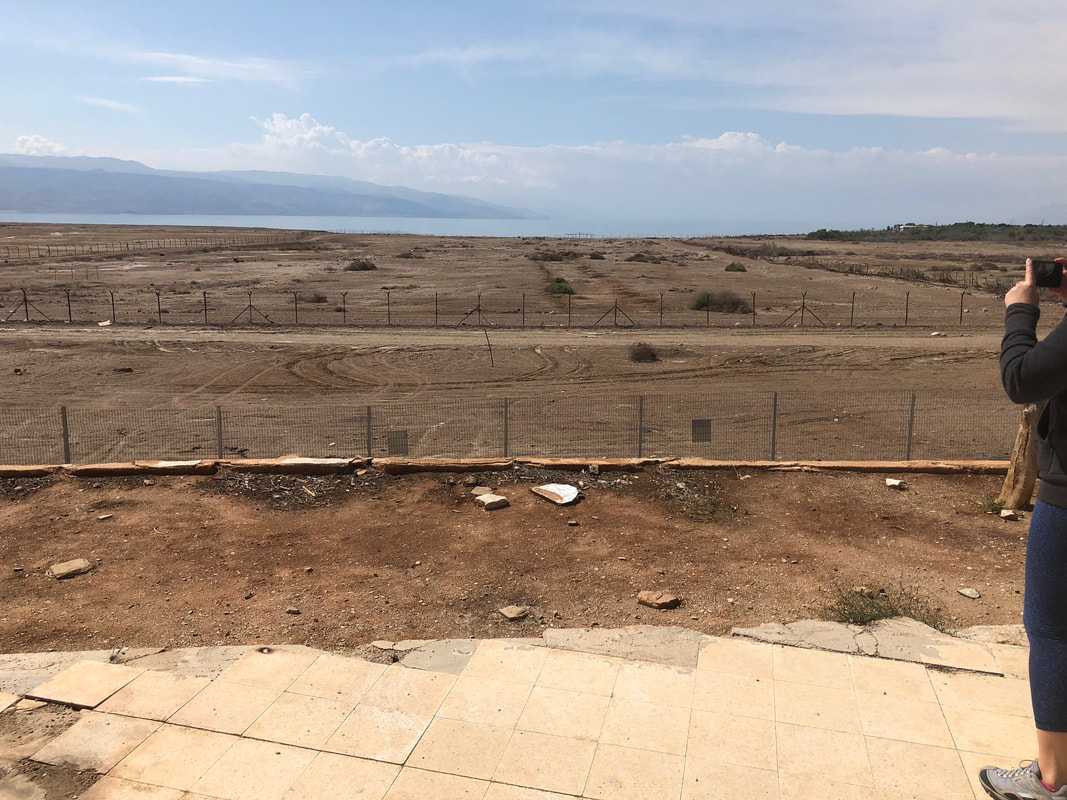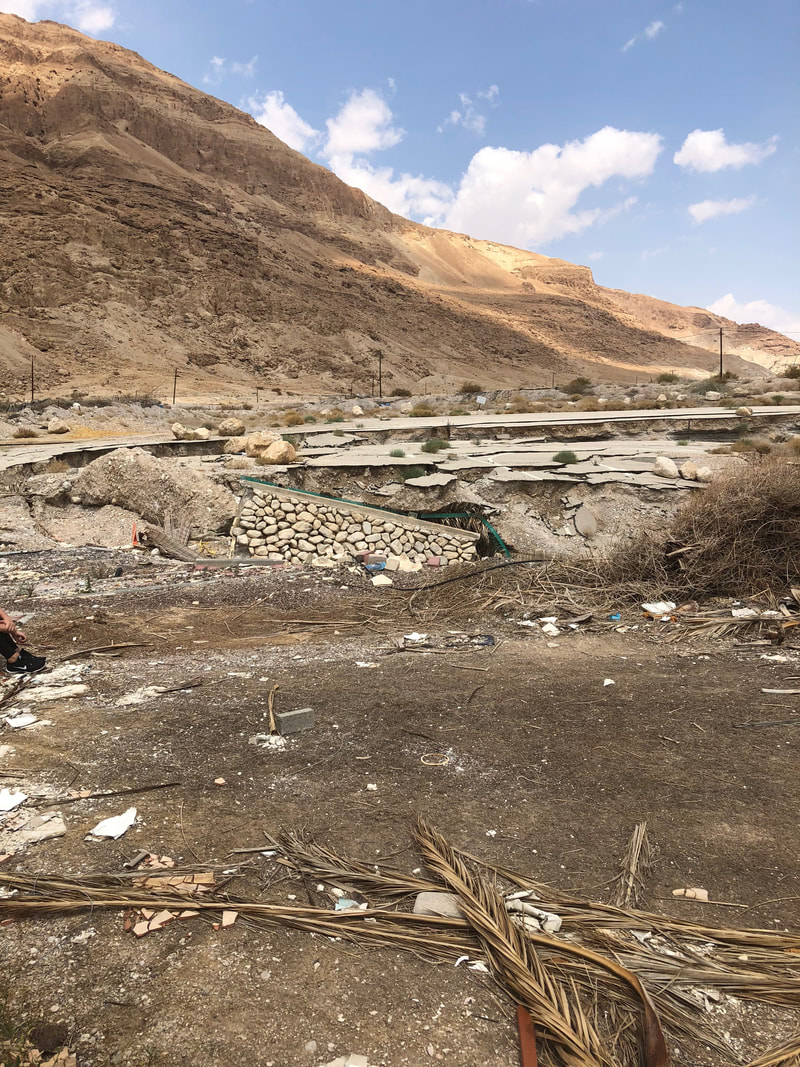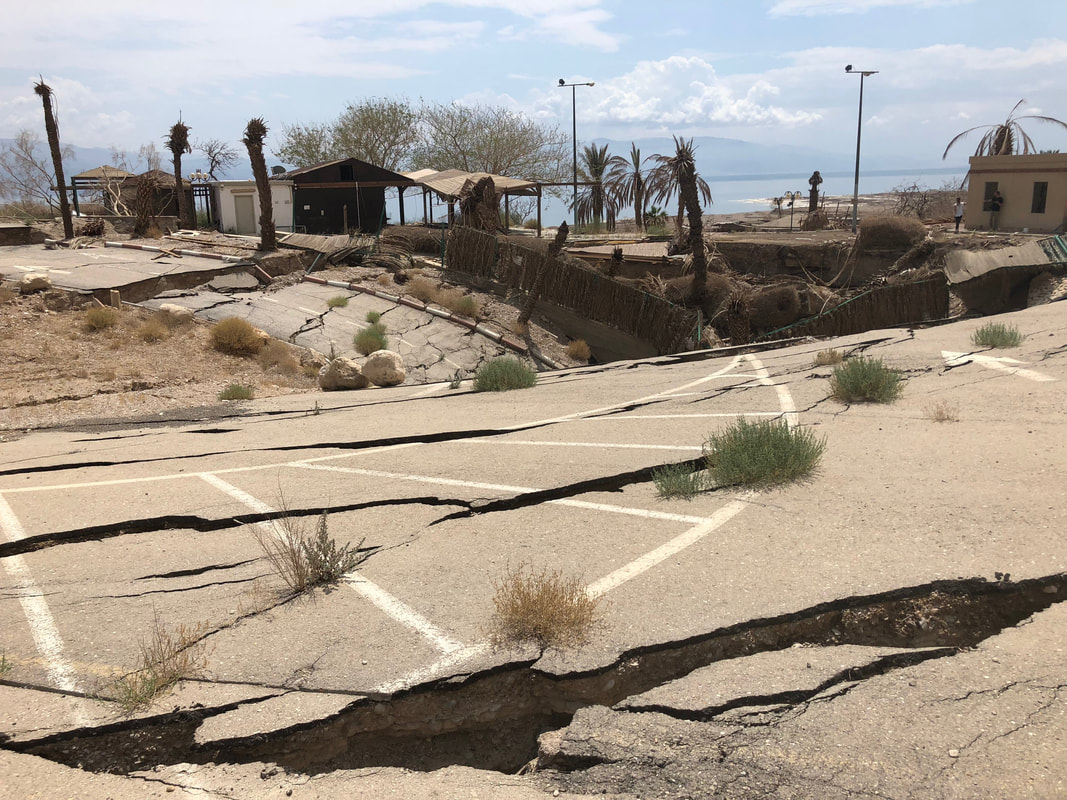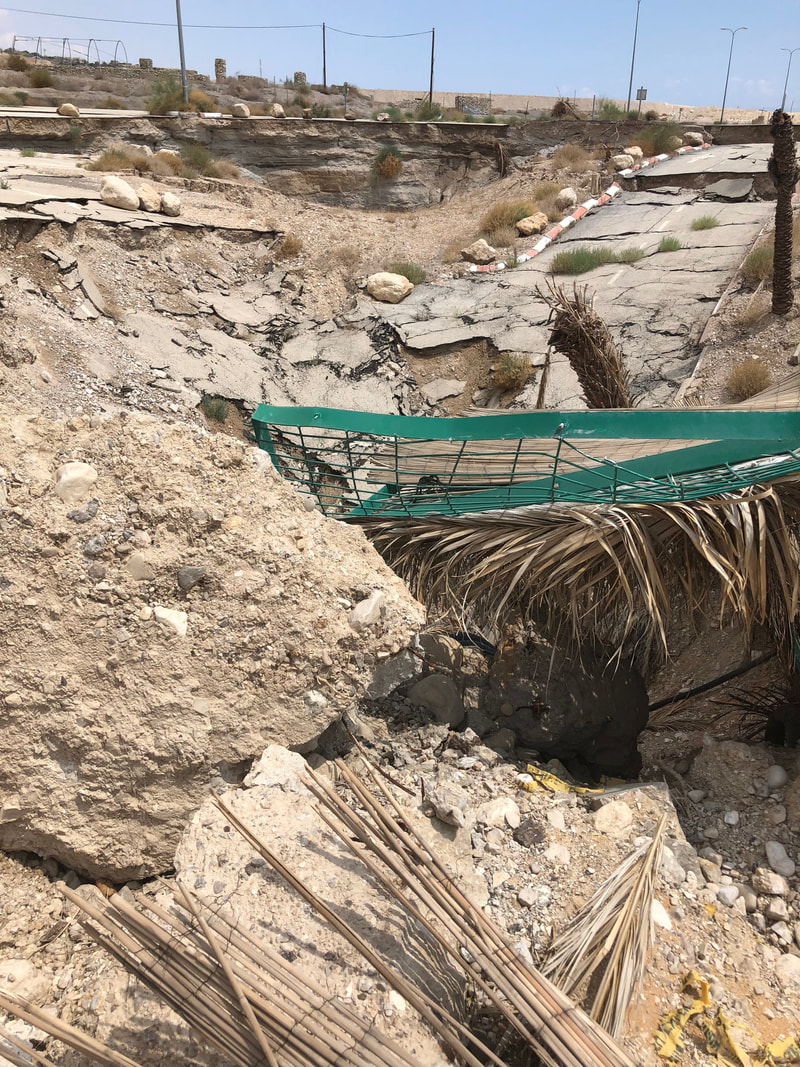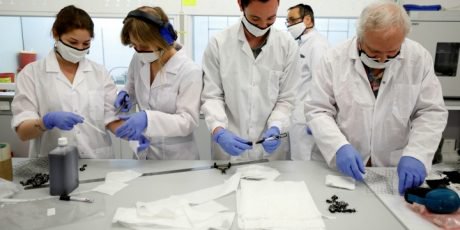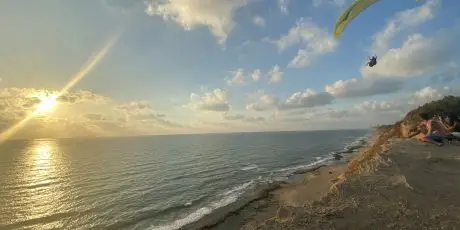by Miranda Wall-Franklin, Tel Aviv University International MA in Conflict Resolution & Mediation
I had been to the Dead Sea on Birthright, but never this side of it. On Sunday, my Masters program had a trip to explore the environmental aspects of conflict resolution in Israel/Palestine.
First, we stopped at Lido Junction. Prior to 1967, this land was part of Jordan’s “West Bank” (and the name stuck). We explored the ruins of a once grand hotel. I could almost feel the happy energy of the families on vacation, hear the sounds associated with great food and conversation. This was the dining hall.
The bar
A window that overlooked the Dead Sea
We came to this spot to see the condition of the Dead Sea today. This hotel used to be beachfront property; the water used to extend all the way up to the ledge. The water is receding at a very fast rate.
Leaving Lido Junction, we stopped at (what is now) the side of the road:
The entire parking lot caved in.
If you’re feeling depressed right now, don’t lose hope! Our environment professor said that the Dead Sea will not dry up completely because the salt slows down evaporation. Therefore, a solution is to add even more salt to the saltiest place on Earth. Thus, the Red Sea-Dead Sea project was born. This would take water from the Red Sea, desalinize it, put the salt in the Dead Sea, and give the fresh water to Jordan, which doesn’t have enough water. On a practical level, the project would solve two problems at once and on a diplomatic level, this would build trust between the two governments. Unfortunately, the Red Sea-Dead Sea project will not happen anytime soon. It is estimated to cost $10 billion dollars and no one is sure how adding more salt will effect the make up of the Dead Sea. This creates hesitation from manufacturers who profit from the way the Dead Sea is now, such as Bromine deposits and other such minerals.
Read more in Miranda’s blog A Year In Israel




